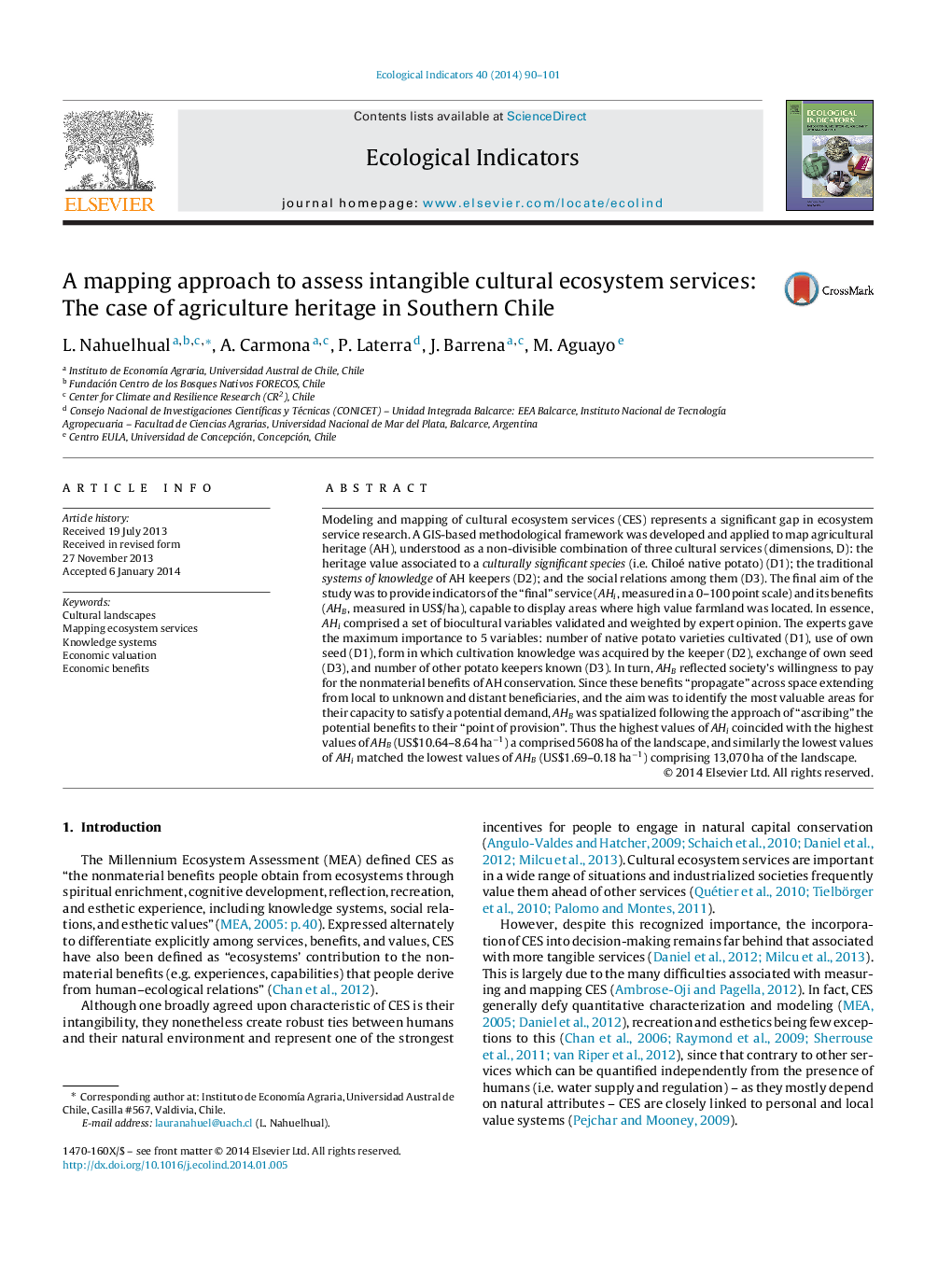| Article ID | Journal | Published Year | Pages | File Type |
|---|---|---|---|---|
| 4373234 | Ecological Indicators | 2014 | 12 Pages |
•A procedure for mapping the flow and economic benefits of cultural ecosystem services was proposed.•The procedure was applied to cope with intangible elements of an agricultural heritage (AH) case.•AH indicators relied on culturally significant species, knowledge systems, and social relationships.•Benefits mapped at their point of provision allowed for identification of areas with high AH value.
Modeling and mapping of cultural ecosystem services (CES) represents a significant gap in ecosystem service research. A GIS-based methodological framework was developed and applied to map agricultural heritage (AH), understood as a non-divisible combination of three cultural services (dimensions, D): the heritage value associated to a culturally significant species (i.e. Chiloé native potato) (D1); the traditional systems of knowledge of AH keepers (D2); and the social relations among them (D3). The final aim of the study was to provide indicators of the “final” service (AHi, measured in a 0–100 point scale) and its benefits (AHB, measured in US$/ha), capable to display areas where high value farmland was located. In essence, AHi comprised a set of biocultural variables validated and weighted by expert opinion. The experts gave the maximum importance to 5 variables: number of native potato varieties cultivated (D1), use of own seed (D1), form in which cultivation knowledge was acquired by the keeper (D2), exchange of own seed (D3), and number of other potato keepers known (D3). In turn, AHB reflected society's willingness to pay for the nonmaterial benefits of AH conservation. Since these benefits “propagate” across space extending from local to unknown and distant beneficiaries, and the aim was to identify the most valuable areas for their capacity to satisfy a potential demand, AHB was spatialized following the approach of “ascribing” the potential benefits to their “point of provision”. Thus the highest values of AHi coincided with the highest values of AHB (US$10.64–8.64 ha−1) a comprised 5608 ha of the landscape, and similarly the lowest values of AHi matched the lowest values of AHB (US$1.69–0.18 ha−1) comprising 13,070 ha of the landscape.
